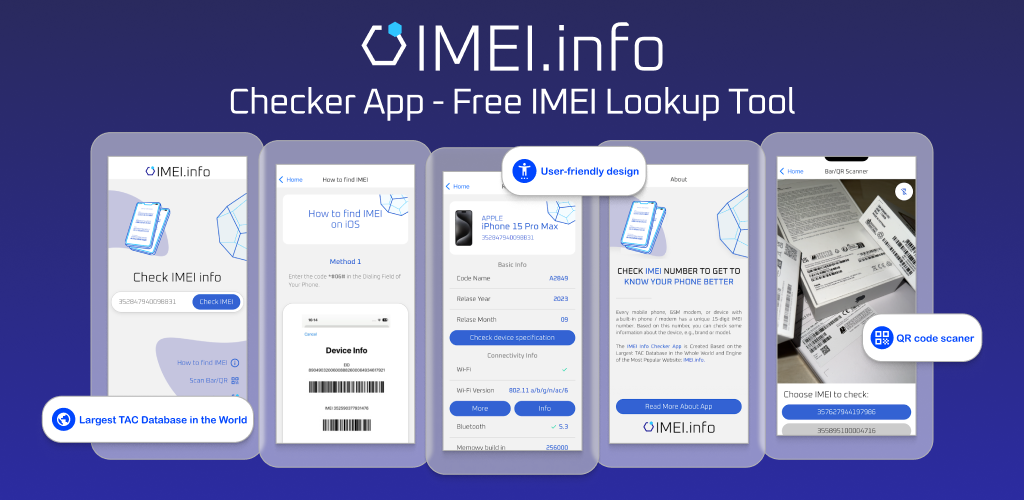In the world of international trade, understanding shipping terminologies is a key factor in ensuring smooth transactions and deliveries. If you're new to this field, acronyms like FCL might leave you confused. FCL, standing for Full Container Load, is one such term that you'll frequently encounter.
So, what does Full Container Load mean? It's a term used in sea freight service that implies that you're booking an entire container exclusively for your goods. This could be a 20-foot or 40-foot container depending on the volume of your shipment."
The use of FCL is common when you have enough goods to fill up at least one whole container. It's more cost-effective and often faster than its counterpart LCL (Less than Container Load), where several shipments share a single container. Understanding how and when to choose between FCL and LCL can significantly impact your shipping costs and timelines.
Understanding FCL in Shipping Terms
To grasp the concept of Full Container Load (FCL) in shipping terms, you first need to understand what a container is. Essentially, it's a large standard size metal box used to transport goods by sea, road or rail. Now let's delve into the term FCL.
In the world of international trade and freight forwarding, FCL stands for "Full Container Load". It signifies that you're shipping enough goods to fill an entire container on your own. You're not sharing space with other shippers' goods; it's all yours.
Why would this matter? Well, choosing FCL over another type of shipment can have several benefits. For one, your cargo generally undergoes less handling which reduces the risk of damage during transit. Plus, since you're not sharing with others, there are fewer delays related to consolidation and deconsolidation processes.
You might be wondering about the sizes available when opting for FCL shipment. The typical dimensions include 20-foot and 40-foot containers but larger options like 45-foot or even 53-foot containers are also accessible depending on your needs.
Here's a brief look at these common container sizes:
| Size | Dimensions |
| 20 ft | 19'10" long x 8' wide x 8'6" tall |
| 40 ft | 40' long x 8' wide x 8'6" tall |
| 45 ft | 45’ long x 9’6” tall |
Selecting between LCL (Less than Container Load) and FCL isn't always straightforward - it depends on factors like volume of goods, urgency and budget among others. But now that you've got a clearer understanding of what FCL means in shipping terms, making an informed decision should be easier!
The Origin of FCL and Its Importance
Believe it or not, the term FCL in shipping terms stands for "Full Container Load". This phrase was born out of necessity when the shipping industry began to evolve. As companies started moving larger quantities of goods across oceans, they needed a term to describe shipments that filled an entire container.
FCL became that term, revolutionizing how we think about bulk transportation. By defining a shipment as an FCL, companies could better plan their logistics and streamline their operations. It's a small phrase but with massive implications in the world of international commerce.
But why is FCL so important? Well, let's break it down:
- Efficiency: When you're shipping an FCL load, you're making full use of your space. That means you’re maximizing your shipping investment – every inch counts!
- Security: With an FCL shipment, your goods are the only ones in the container. There’s less risk of damage from other items moving around during transit.
- Speed: Since there aren't multiple parties involved as in LCL (Less than Container Load) shipments, customs clearance tends to be quicker with fewer delays.
So next time you come across 'FCL' in a conversation about shipping terms or see it on a freight forwarder's quotation sheet - remember its importance. It isn’t just some jargon; it represents efficiency, security and speediness in global trade!
FCL vs LCL: A Comparative Analysis
Let's delve further into the realm of shipping and decode the two significant terms: FCL vs LCL. These acronyms, representing Full Container Load and Less than Container Load respectively, play a pivotal role in comprehending the global management, pricing, and transportation of shipments.
In the simplest terms, FCL refers to a shipment that fills up an entire container. It's often the go-to option for large shipments as it offers certain benefits. You're renting out an entire container exclusively for your goods which gives you better control over your shipment. Your goods aren't mixed with others', minimizing potential damages or losses during transit. Plus, FCL generally has a faster transit time since there's no need to consolidate various shipments.
On the flip side, we have LCL, perfect for smaller cargo volumes that don't require a full container. With LCL, multiple shippers' goods are consolidated into one container before being shipped off to their respective destinations. This method is cost-effective if you're dealing with smaller quantities as you only pay for the space your cargo occupies.
However, there's more handling involved in LCL due to consolidation and deconsolidation processes at each terminal point which might increase chances of damage or loss. Additionally, transit times may be longer because of these extra steps.
To give this context:
| FCL | LCL | |
| Ideal Volume | Large Shipments | Smaller Shipments |
| Cost Effectiveness | High for Large Volumes | High for Small Volumes |
| Transit Time | Faster (No Consolidation Needed) | Slower (Due to Consolidation Process) |
| Risk Factor | Lower (Less Handling Involved) | Higher (More Handling Due to Consolidation) |
Choosing between FCL and LCL depends largely on your specific needs – volume, budget, delivery timeline, and risk factor. It's crucial to weigh these factors carefully to ensure you're selecting the most efficient and cost-effective method for your shipping needs.
Advantages of Using FCL in Shipping
When you're involved in the shipping industry, understanding different shipping methods like Full Container Load (FCL) can give you a competitive edge. Let's delve into the benefits of using FCL.
A significant advantage to using FCL is that it offers exclusivity. That's right! Your goods are the only ones occupying the container during transit. This drastically reduces potential risks associated with sharing containers, such as damage or loss from other shipments' mishandling.
It's also important to know that with FCL, loading and unloading processes are typically quicker than other methods like Less than Container Load (LCL). Since there's no need for consolidation or de-consolidation at warehouses, you'll experience fewer delays. This means your cargo gets to its destination faster – a win for everyone!
Keep in mind that while FCL might be pricier upfront compared to LCL, it could ultimately save you money on larger shipments. Here's why: when you ship FCL, you pay a flat rate per container rather than per cubic meter of goods. So if your shipment fills up most or all of a container, it makes more financial sense to go with an FCL arrangement.
Lastly, let's not forget about flexibility – one of the key perks of choosing FCL shipping. With this method, shippers have more control over their schedule since they don't have to wait for other goods to fill up space in their container before it leaves port.
In summary:
- Exclusivity: Only your goods are present in the container.
- Speed: Quicker loading and unloading times lead to less overall transit time.
- Cost-Efficiency: Paying a flat rate per container can be cheaper for larger shipments.
- Flexibility: Schedule departures according to your timeline instead of waiting on others.
So when considering your next big shipment, don't overlook the potential benefits that FCL can provide. It’s a smart move for many shippers and could be the ideal solution for your needs too!
Potential Drawbacks of FCL Shipping Method
While you might find the FCL shipping approach appealing, it's important to note that there are potential drawbacks. One significant downside is that it requires a substantial volume of goods to make economic sense. If your shipment isn't large enough to fill an entire container, you'll be paying for unused space.
Another issue is that FCL shipping can lead to longer delivery times. This is because you must wait for the container to be fully loaded before it can be shipped. If timing is crucial for your business operation, this could pose a significant problem.
In addition, using FCL means having all your eggs in one basket - literally! If something goes wrong with the container during transit (like damage or theft), all of your items are at risk.
Moreover, customs clearance procedures may also take more time with FCL shipments than with less-than-container-load (LCL) ones as each item within the container needs to be inspected and cleared individually which often results in delays.
Lastly, while many transporters offer tracking services for their containers, this doesn’t guarantee real-time updates on your shipment’s location or status. This lack of visibility could potentially cause stress and uncertainty about whether your goods will arrive on time and in good condition.
How to Determine If FCL is Right for Your Shipment
Let's dive into the world of shipping and unravel whether Full Container Load (FCL) suits your needs. It’s crucial you assess your shipment requirements, as this will lay the groundwork for your decision.
Firstly, consider the volume of your goods. In general, if you're shipping more than half the capacity of a 20-foot container – roughly 15 cubic meters or more – FCL may be a cost-effective choice for you. This is because FCL charges are based on a flat rate per container, not per unit.
Secondly, ponder over your delivery timeline. With FCL shipments, there's less handling involved since it contains only your goods. This translates to lesser chances of delays due to unloading and reloading at various ports before reaching its destination.
Thirdly, analyze the nature of your products. If they're fragile or high-value items that need extra care during transit, then an exclusive space like what FCL offers might just be what you need! Since other shippers' goods aren't loaded in with yours in an FCL shipment, there's a lower risk of damage from shifting loads.
Lastly but not least importantly - think about security aspects. As no other consignments are added or removed during transit in an FCL shipment; tampering possibilities drop significantly compared to Less than Container Load (LCL) consignments.
Remember these insights while deciding on whether to go for an FCL shipment:
- High-volume shipments
- Tight delivery timelines
- Fragile or high-value products
- Need for enhanced security
In short: size matters when it comes to picking between LCL and FCL; timing can tilt the scales; delicate and pricey cargo might favor full containers; and so does heightened security needs! Now armed with this knowledge; navigate wisely through your next shipping decision!
Real-World Examples of FCL Use in Shipping Industry
When you're involved in international trade, understanding the use of Full Container Load (FCL) shipping becomes crucial. Let's delve into some real-world examples demonstrating how businesses utilize this method for efficient and cost-effective transport.
Imagine you're a U.S.-based furniture retailer importing high-end sofas from Italy. Given the large quantity and size, it's more practical to book an entire container using FCL shipping. This way, your goods are contained safely without sharing space with other shippers, reducing potential damages during transit.
Another instance could be a wholesale electronics dealer exporting a large volume of laptops from California to Japan. Here, booking an entire container via FCL makes sense as it allows you to lock in your costs upfront, avoiding fluctuations due to less-than-container-load (LCL) consolidations or deconsolidation fees at the destination port.
It's also worth noting that companies dealing with time-sensitive products often opt for FCL shipping. Picture a fashion brand launching its new collection simultaneously worldwide. They'd certainly want their shipment arriving intact and on time without delays caused by shared-space shipments.
Finally, consider agricultural exporters who ship large volumes of produce like corn or wheat across continents. These commodities take up significant space and weight - perfect candidates for FCL transport where they can fill an entire container efficiently without worrying about cross-contamination from other goods.
All these examples show how pivotal FCL shipping is within various sectors of the global trade industry. It highlights its role in ensuring safe handling, timely deliveries while optimizing costs for high-volume shippers.
Conclusion: Simplifying Shipping with the Understanding of FCL
By now, you've got a pretty good grasp on what FCL means in shipping terms. It's Full Container Load if you're still catching up. Isn't it just like learning a new language? You've added another term to your vocabulary and that's something to be proud of!
Understanding FCL is more than just knowing what the acronym stands for. It’s about grasping how it can benefit your business operations. With FCL, you're leveraging an economical and efficient mode of transport, especially when dealing with large quantities of goods.
Here are some key takeaways:
- Efficiency – All your goods are in one container which makes tracking easier.
- Economical – With bigger shipments, costs per unit shipped tend to decrease.
- Security – Less handling means less chance of damage or theft.
So next time someone asks about shipping methods - whether they’re industry insiders or curious friends - throw around "FCL" confidently! Not only will you sound like an expert but also gain respect for understanding the nitty-gritty details.
Remember, knowledge is power! And in this case, it's helping simplify shipping for your business while ensuring maximum efficiency and economy. So keep learning and keep growing because who knows what other acronyms might pop up in our complex world of logistics?
After all, it's not just about moving boxes from point A to point B; it's also about doing so intelligently!

Mastering the Art of Audio Upmixing
UniFab Audio Upmix AI is revolutionizing the way audio production is approached in various industries. By utilizing cutting-edge artificial intelligence technology, UniFab Audio Upmix AI offers a unique and innovative solution for upmixing audio content to deliver superior sound quality.

Revolution on the Used Device Market: How Automation is Leading the Way
The main trend in the used device market is automation. All processes that are done manually have one common drawback: human errors.

What are the advantages of using a woman owned staffing agency?
While selecting a staffing agency in the current evolving and inclusive business environment the significance of diversity and equality cannot be ignored. It has become more evident than before. Businesses can actively add to this objective and enjoy an inclusive and gender equal workforce by partnering with a women recruitment agency. Teaming up with an agency can help you enjoy a completely unique perspective about recruitment, gender diversity and values to the hiring process.

The Art of Selecting the Perfect Bouquet for Every Occasion: A Comprehensive Guide
In the world of floral gifting, selecting the perfect bouquet is an art form that goes beyond simply choosing pretty flowers. Each occasion carries its own significance and sentiment, and the right bouquet has the power to convey exactly the message you intend. Whether you're celebrating a joyful milestone, expressing condolences, or simply saying "I love you," understanding the nuances of flower selection can elevate your gift to a meaningful expression of emotion. In this comprehensive guide, we'll delve into the art of selecting the perfect bouquet for every occasion, offering expert tips and insights to help you navigate the world of floral gifting with confidence and flair.

How many eSIMs can be used in iPhone?
Are you looking to streamline your mobile experience with an eSIM for your iPhone? The advent of eSIM technology has revolutionized the way we connect, allowing for a more seamless and efficient use of our devices. With an eSIM iPhone, you can forget about the hassle of physical SIM cards and enjoy the benefits of multiple network plans on a single device. But how many eSIMs can an iPhone support? And how do you go about adding an eSIM to your iPhone? In this article, we'll dive into the ins and outs of eSIM capabilities on your SIM iPhone, providing you with a step-by-step guide to getting set up. Keep reading to unlock the full potential of your iPhone with eSIM technology and learn how to enhance your connectivity with ease.

IMEI Info Checker App
The awaited moment has arrived! After a period of anticipation, we take immense pride in announcing the launch of the IMEI Info Checker App, marking a pivotal moment in accessing concealed mobile device information. In today's digitally intertwined landscape, understanding your device's nuances is pivotal. This long-awaited unveiling undoubtedly simplifies access to concealed information about any mobile device. Soon available on the App Store for iOS and the Play Store for Android, this app promises a transformative shift in how users interact with their device data.

iPhone GSX Check
Are you seeking essential details about your iPhone's carrier network, warranty status, and other critical information? The iPhone GSX Check provides comprehensive insights into various aspects like simlock network, Find My iPhone status, warranty info, and more.

eSIM Quick Transfer - All You Need to Know
In the ever-evolving landscape of smartphone technology, eSIM (embedded SIM) has emerged as a game-changer, offering greater flexibility and convenience for users. One of the latest innovations in this realm is the eSIM Quick Transfer feature, which streamlines the process of transferring eSIM profiles between devices. Whether you're an iPhone aficionado or an Android enthusiast, understanding the ins and outs of eSIM Quick Transfer is essential for maximizing the potential of your mobile experience.



















